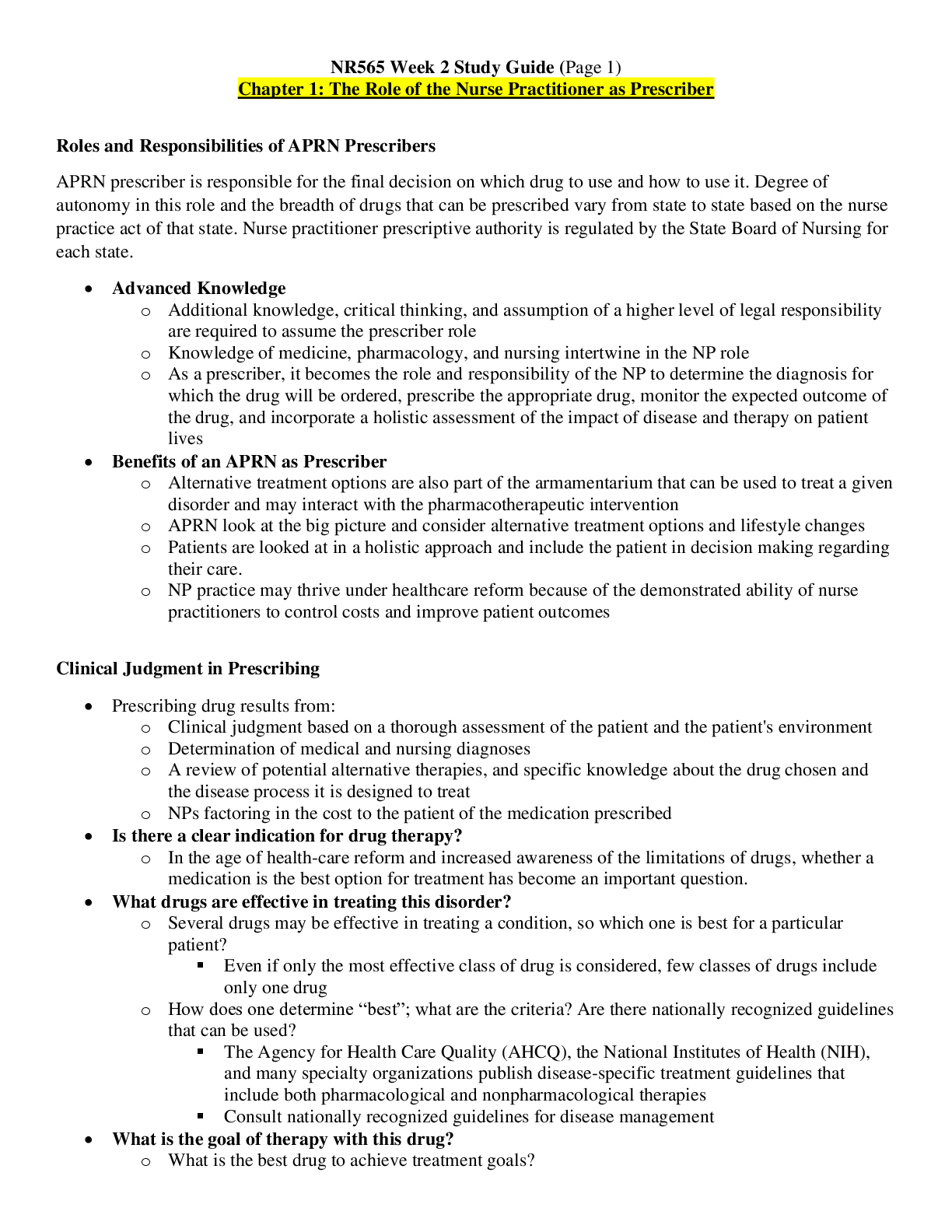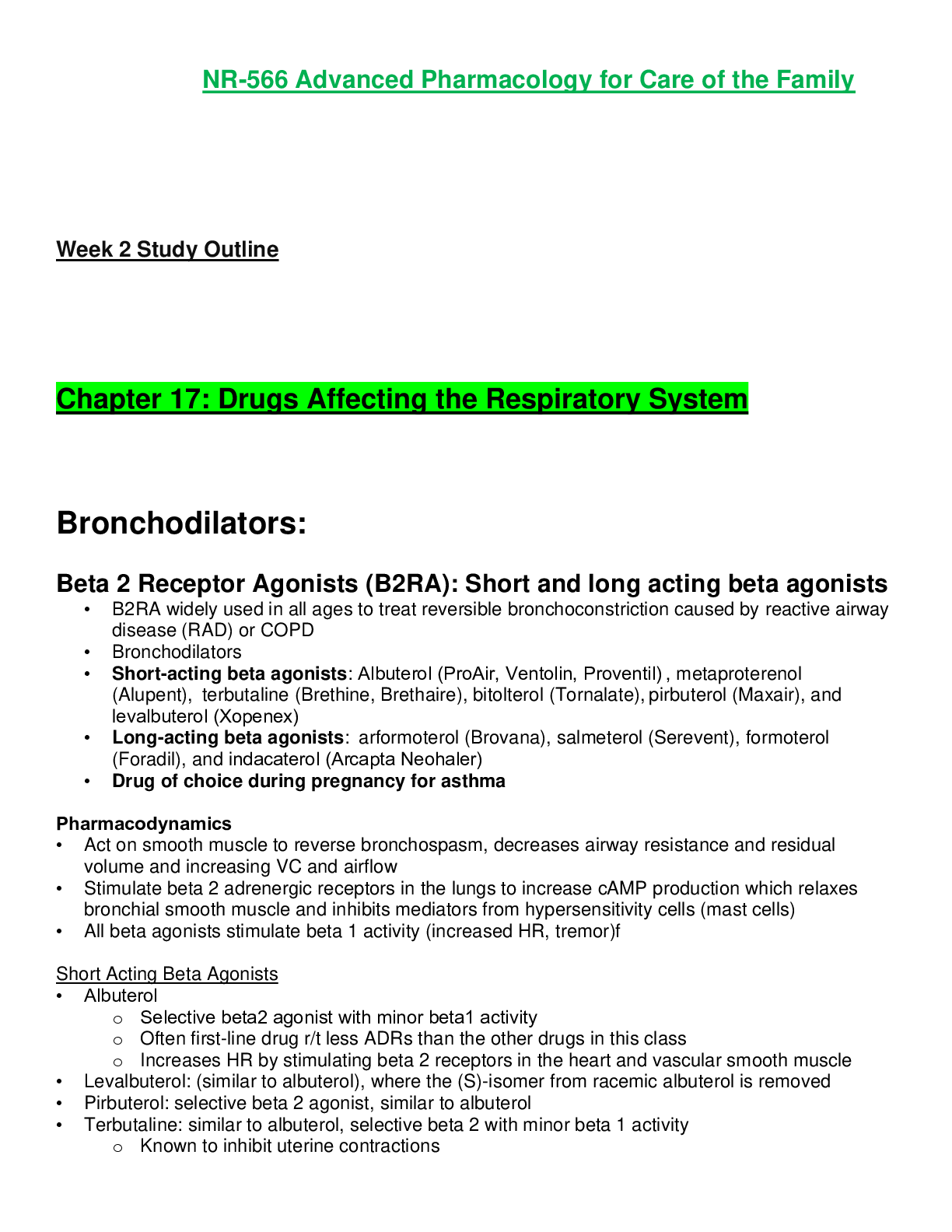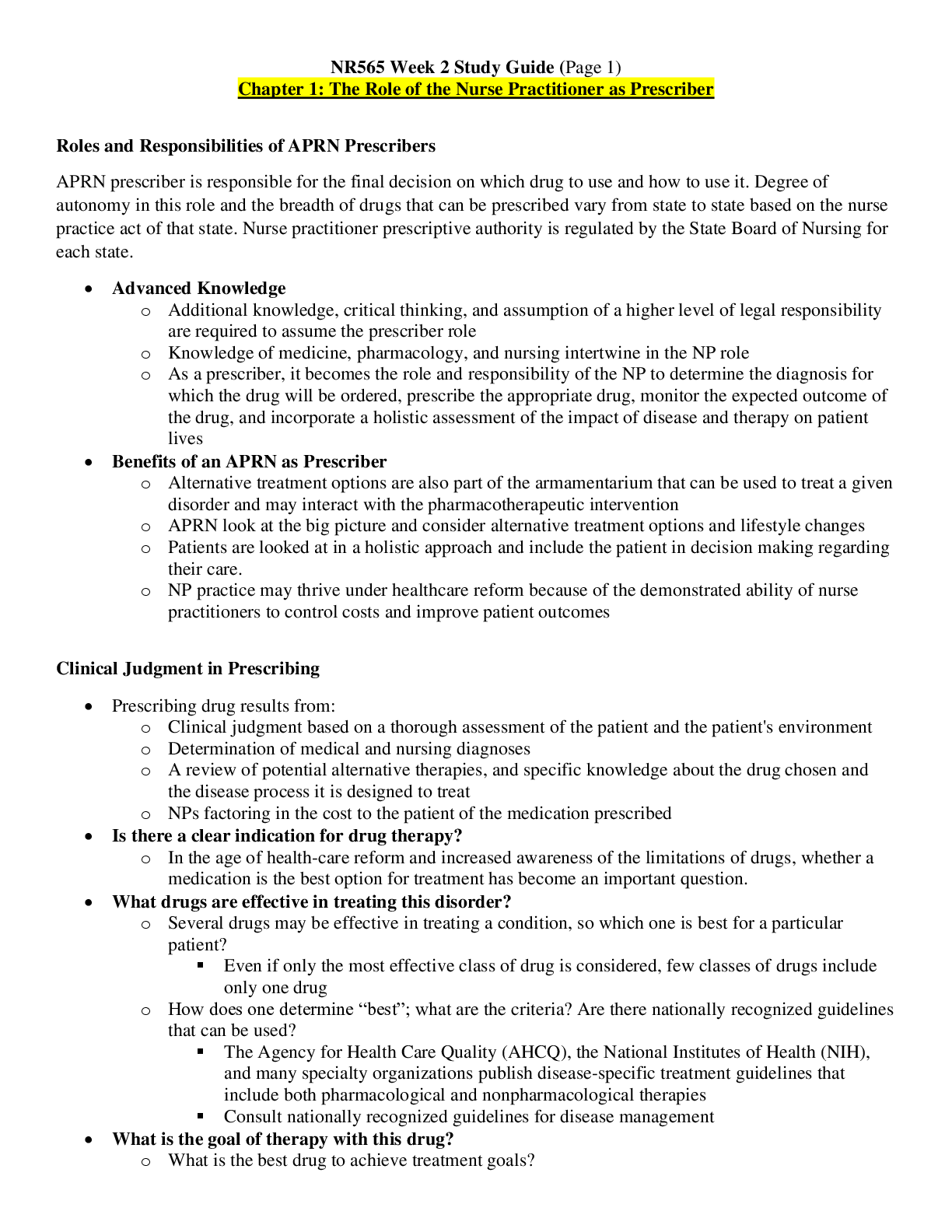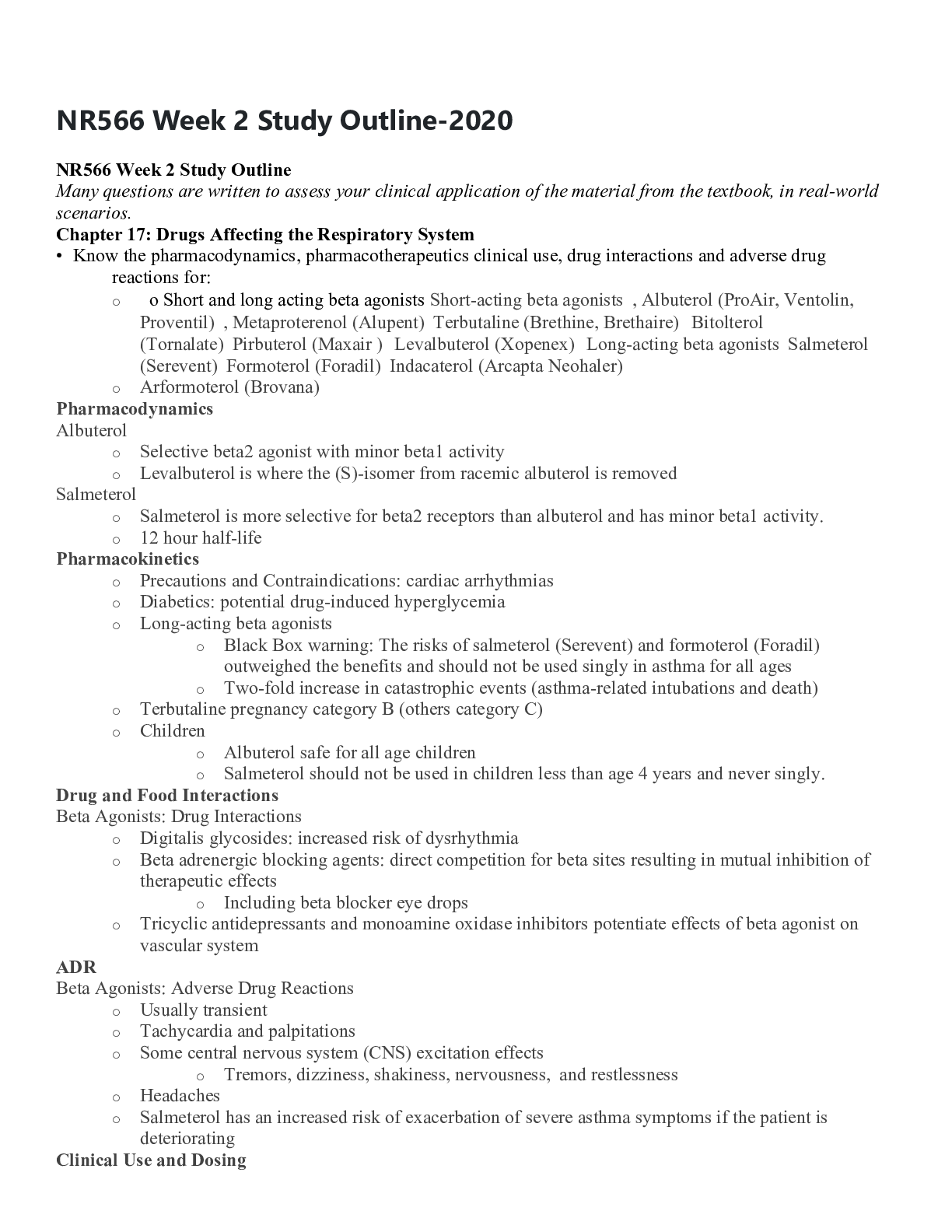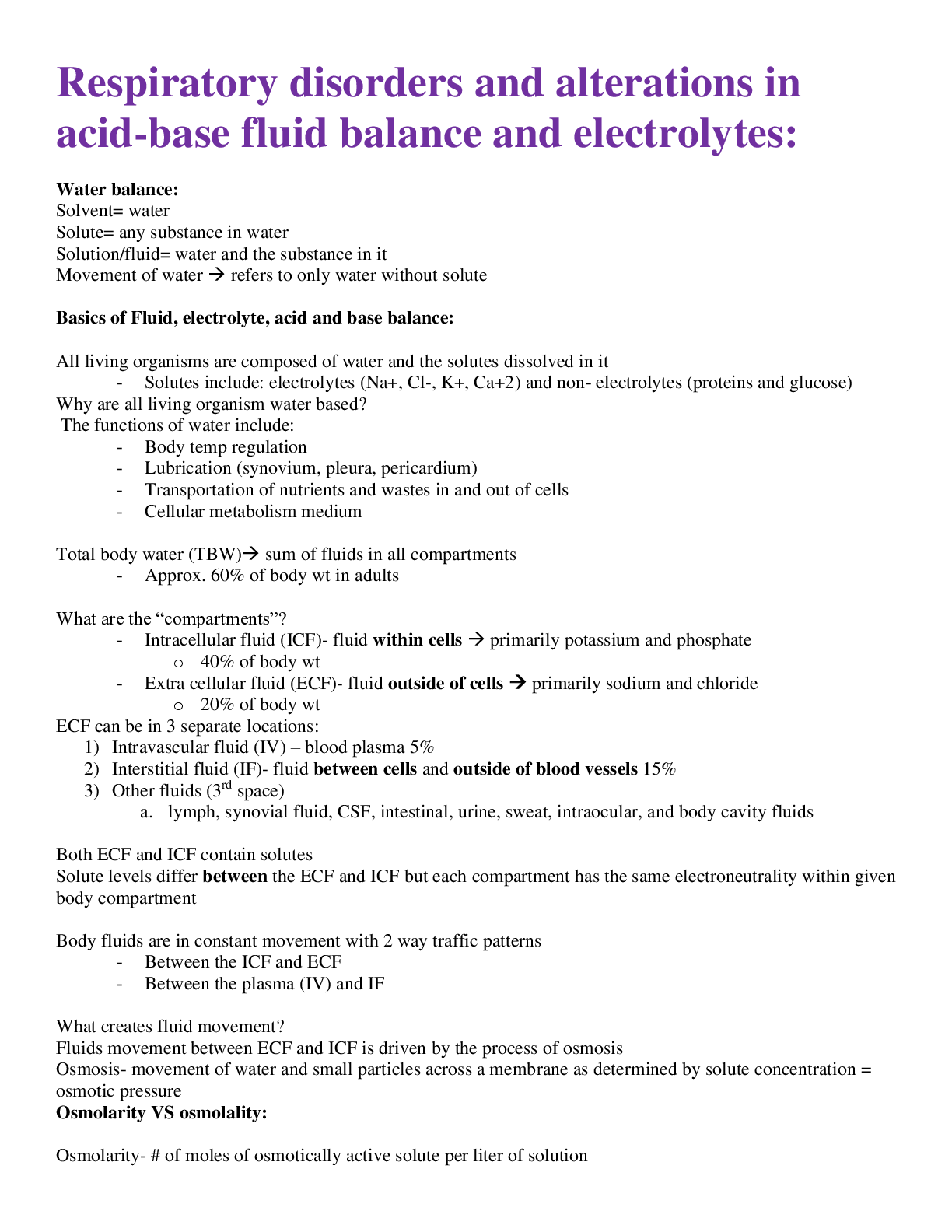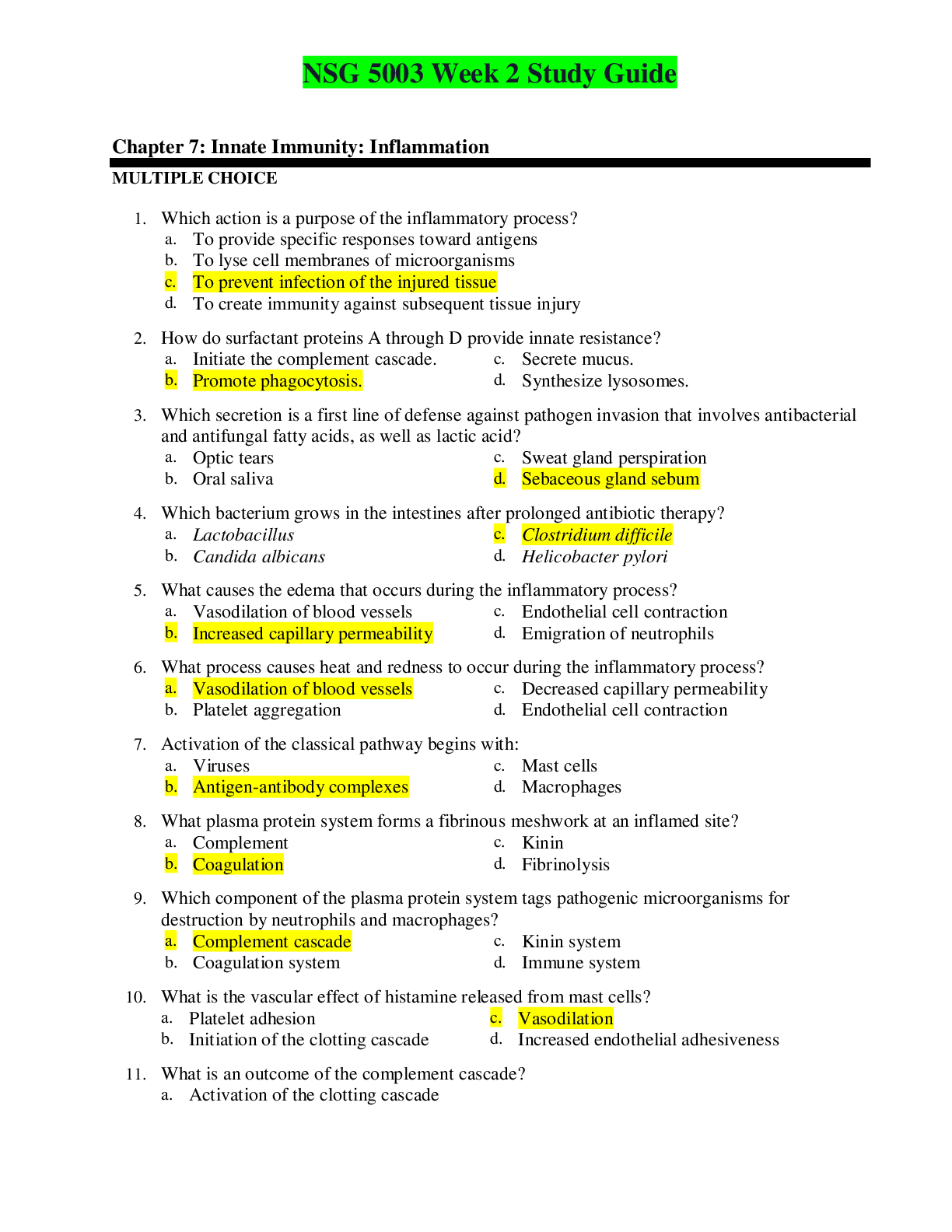*NURSING > STUDY GUIDE > Chamberlain College Of Nursing-NR 511 Week 2 Study Guide: Definitions and Answers-A Grade (All)
Chamberlain College Of Nursing-NR 511 Week 2 Study Guide: Definitions and Answers-A Grade
Document Content and Description Below
Week 2 Study Guide: ● Identify thhe most common type of pathogen responsible for acute gastroenteritis. -Viral: Norovirus (Leading cause for adults) -Rotovirus (Leading cause for peds up to 2 ye... ars old) ● Recognize that assessing for prior antibiotic use is a critical part of thhe history in patients presenting with diarrhea. -Order stool studies ● Describe thhe difference between Irritable Bowel Disease (IBS) & Inflammatory Bowel Disorder (IBD). - IBS (Irritable bowel syndrome): disorder of bowel function not from anatomic abnormality +S/S: result from disordered sensation or abnormal function of thhe small & large bowel -IBD (Inflammatory bowel disease): chronic immunologic disease that manifests in intestinal inflammation ● Discuss two common Inflammatory Bowel Diseases. -Ulcerative colitis (UC): thhe mucosal surface of thhe colon is inflamed & ultimately results in friability, erosions, & bleeding. -Crohns (CD): thhe inflammation extends deeper into thhe intestinal wall & can involve all or any layer of thhe bowel wall & any portion of thhe GI tract from thhe mouth to thhe anus. ● Discuss thhe difference between sensorineural & conductive hearing loss. - Sensorineural: Results from deterioration of cochlea -Loss of hair cells form thhe organ of Corti -Gradual & progressive -Not correctable but preventable - Conductive: Obstruction between middle & outer ear -Most types are reversible ● Identify thhe triad of symptoms associated with Meniere's disease. -Meniere’s Disease: Sensory disorder of labyrinth (semi-circular canal system) & cochlea -S/S: -Vertigo -Hearing loss -Tinnitus This study source was downloaded by 100000831988016 from CourseHero.com on 05-03-2022 03:59:15 GMT -05:00 https://www.coursehero.com/file/57423708/NR-511-Week-2-Study-Guidedocx/ Week 2 Study Guide: ● Identify thhe symptoms associated with peritonsilar abcess. -increasing unilateral ear & throat pain ipsilateral to thhe affected tonsil -dysphagia -drooling -trismus -erythhema -edema of thhe soft palate with fluctuance on palpation ● Identify thhe most common cause of viral pharyngitis. -adenovirus: MOST common -RSV -Influenza A&B -Epstein-Barr -coxsackie -enteroviruses -herpes simplex ● Identify thhe most common cause of acute nausea & vomiting. -Gastroenteritis: AGE ● Describe thhe differences between medical billing & medical coding. -Medical coding: is thhe use of codes to communicate with payers about which procedures were performed & why. -Medical billing: is thhe process of submitting & following up on claims made to a payer in order to receive payment for medical services rendered by a healthcare provider. ● Compare & contrast thhe two coding classification systems that are currently used in thhe U.S. healthcare system. -Thhe CPT system offers thhe official procedural coding rules & guidelines required when reporting medical services & procedures performed by physician & non-physician providers. -CPT codes are recognized universally & also provide a logical means to be able to track healthcare data, trends, & outcomes. -ICD-10 codes are shorth& for thhe patient’s diagnoses, which are used to provide thhe payer information on thhe necessity of thhe visit or procedure performed. ● Accurately describe why every procedure code must have a corresponding diagnosis code. -Every procedure code needs a diagnosis to explain thhe necessity whethher thhe code represents an actual procedure performed or a nonprocedural encounter like an office visit. This study source was downloaded by 100000831988016 from CourseHero.com on 05-03-2022 03:59:15 GMT -05:00 https://www.coursehero.com/file/57423708/NR-511-Week-2-Study-Guidedocx/ Week 2 Study Guide: ● Identify thhe three components required in determining an outpatient, office visit E&M code. -Place of service -Inpatient -Outpatient -Type of service -Consolations -Office visit -Hospital admission -Patient status -New patient: one who has not received professional service from a provider from thhe same group practice within thhe past 3 years. -Established patient of your practice: has received professional service from a provider of your office within thhe last 3 years. - Thhere are three key components that determine risk-based E&M codes. -History -Physical -Medical Decision Mak [Show More]
Last updated: 1 year ago
Preview 1 out of 5 pages
Instant download

Buy this document to get the full access instantly
Instant Download Access after purchase
Add to cartInstant download
Reviews( 0 )
Document information
Connected school, study & course
About the document
Uploaded On
May 03, 2022
Number of pages
5
Written in
Additional information
This document has been written for:
Uploaded
May 03, 2022
Downloads
0
Views
85



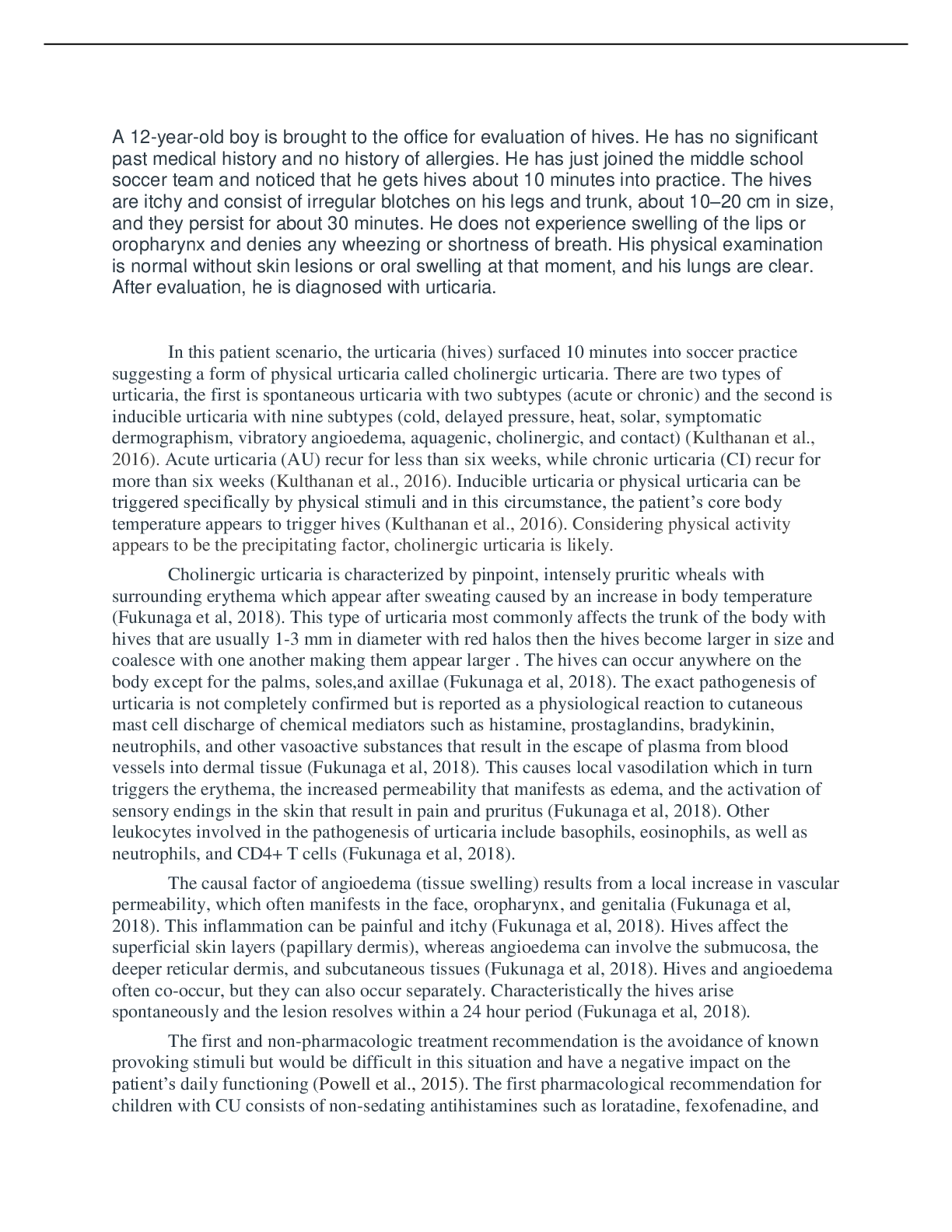
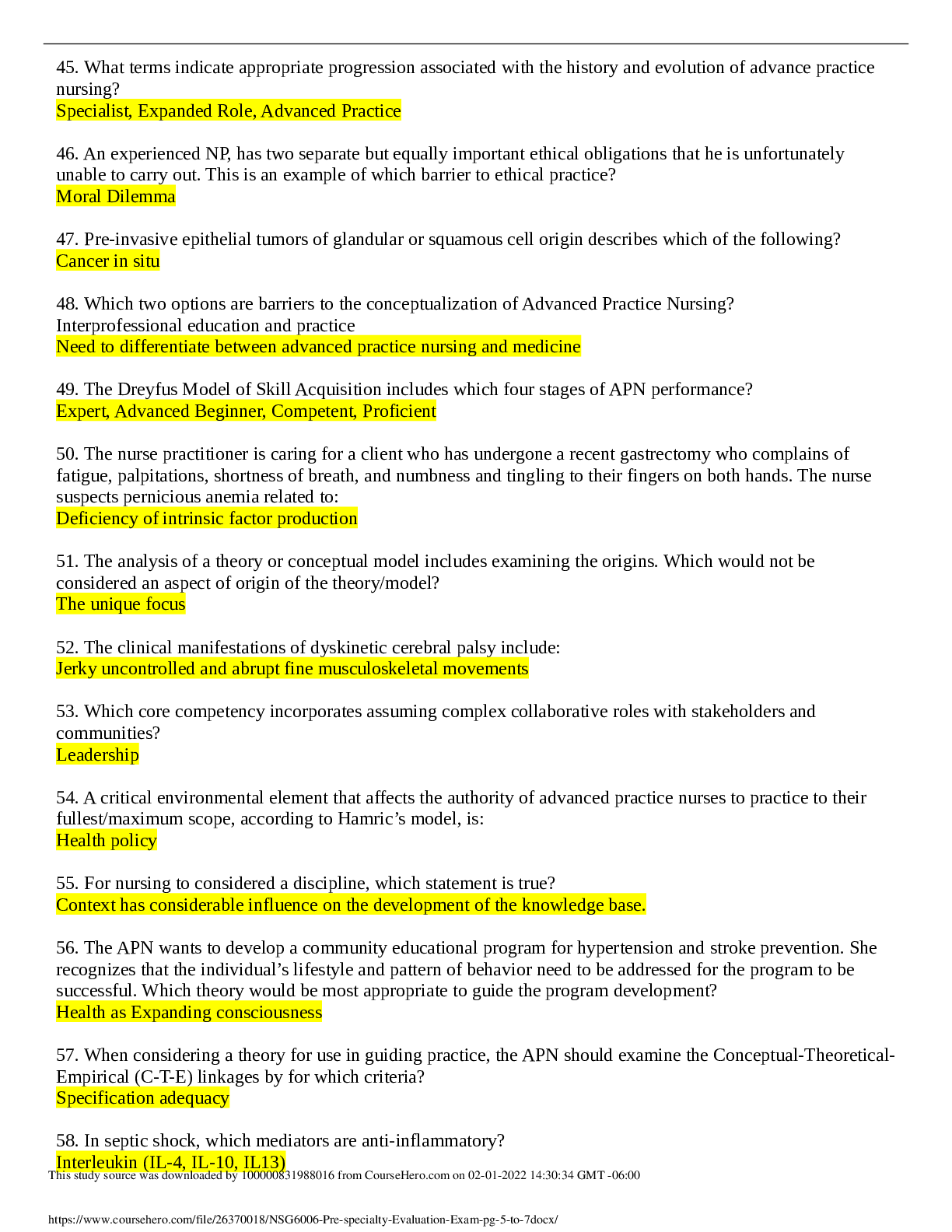





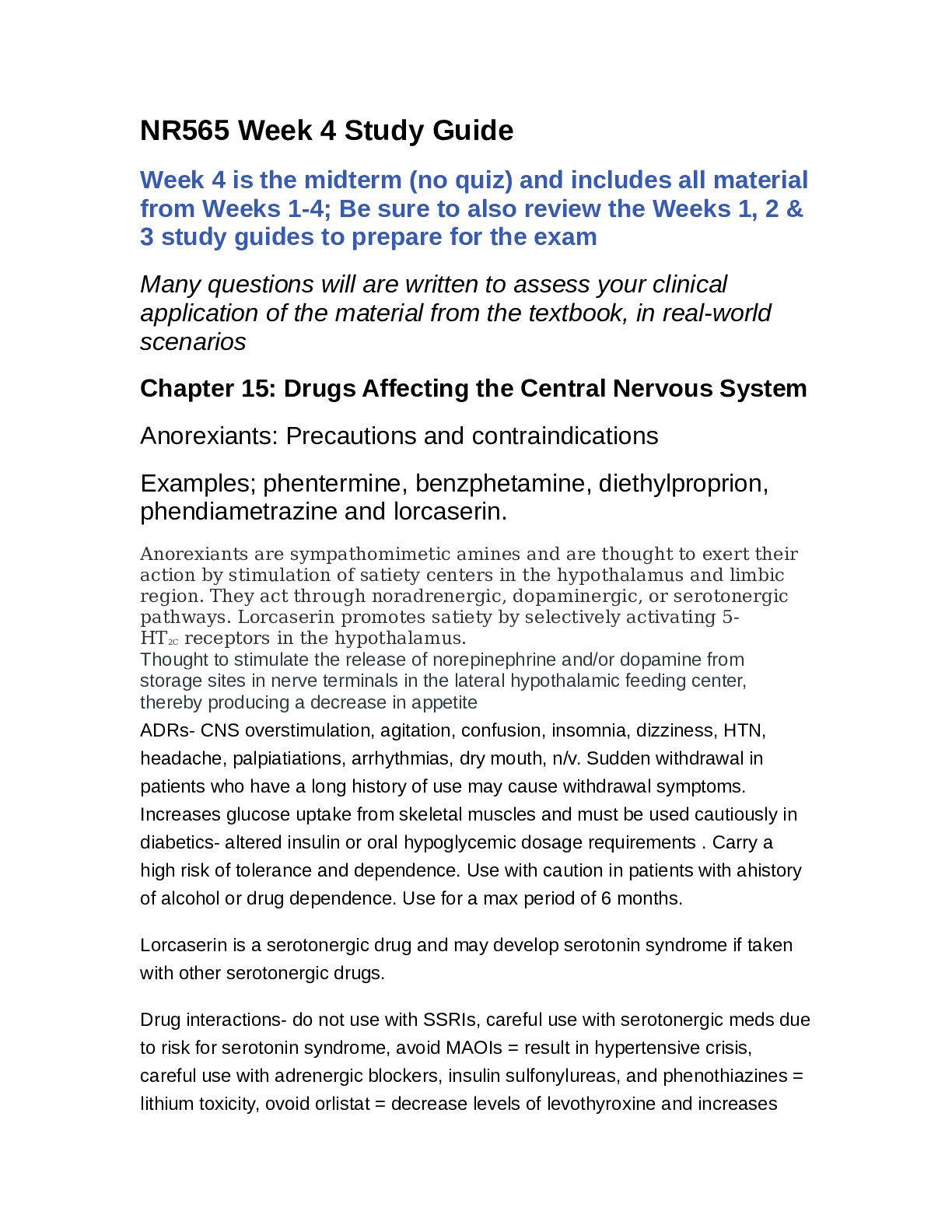


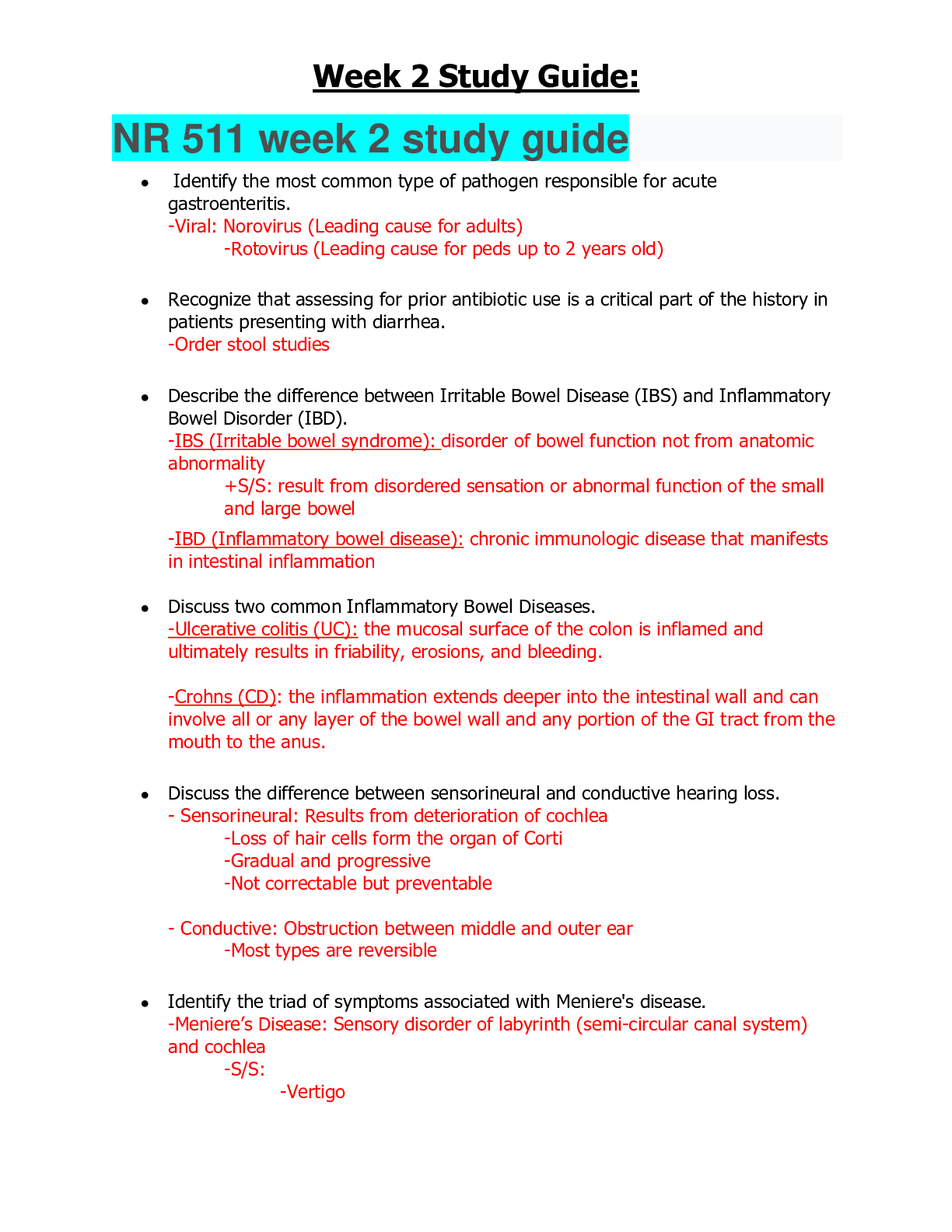
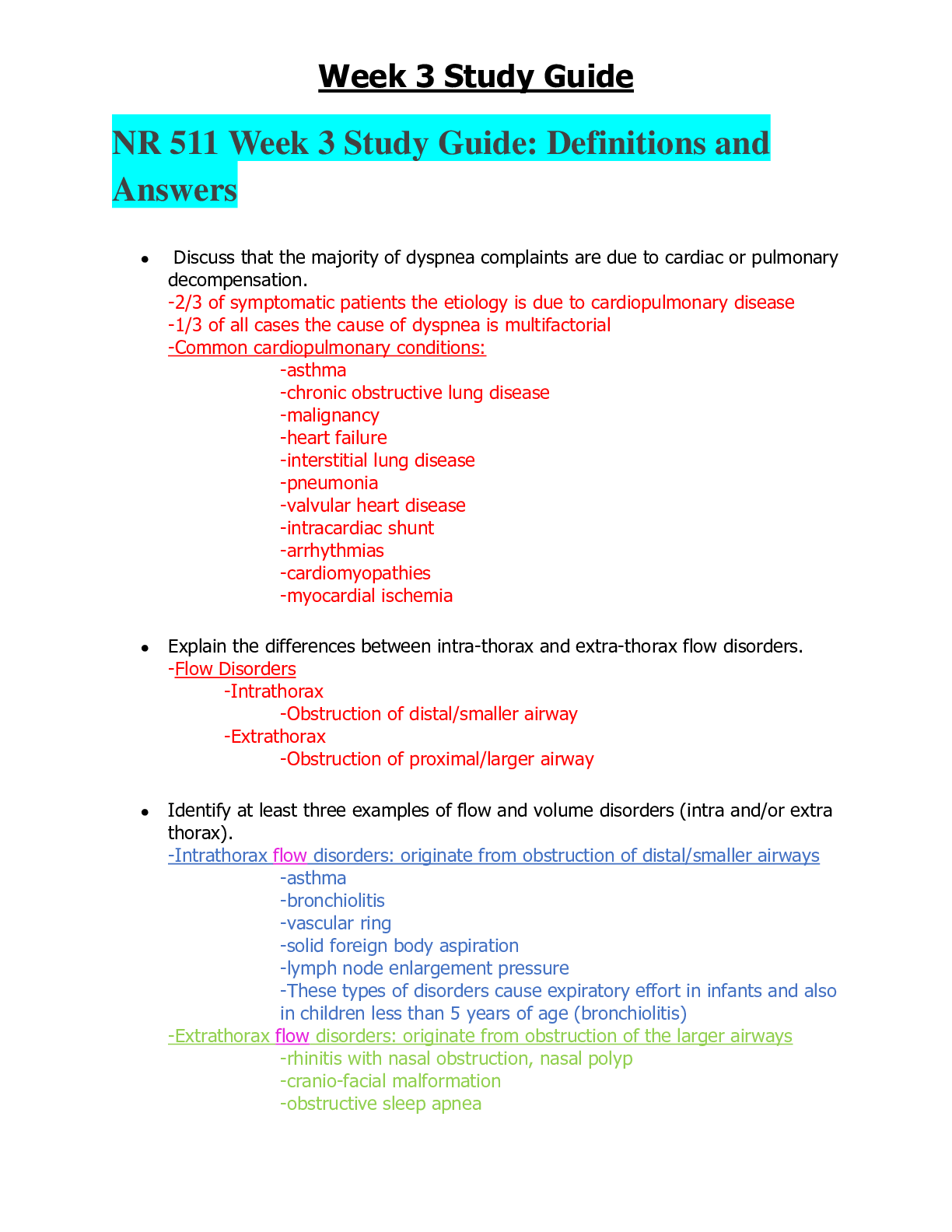
 qans.png)

.png)
